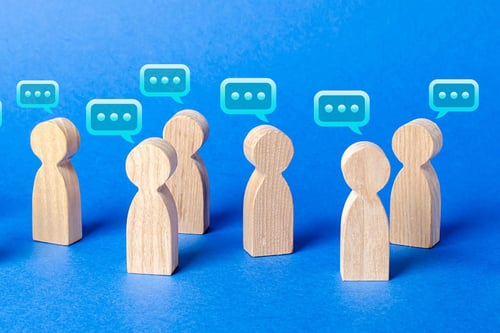If your employee reward and recognition programme was built some years ago, it may contain outdated elements that need a refresh. Leaving it as it is means your company is likely missing out on some bottom-line benefits. Before you panic, this doesn’t necessarily mean you have to toss out every aspect of your organisation’s R&R experience.
Modern employee reward and recognition programmes contain elements of their predecessors, but focus more on motivating and celebrating employees every day of the year.
Over 80 years of research shows that employees crave three things to be motivated at work: Respect, purpose and relationships. Our experience shows that when modern recognition programmes are designed to provide these three things, they have a faster and longer-lasting impact on culture, productivity and even retention.
How does modern reward and recognition evolve to deliver the three things employees crave at work every day?
| Respect: |
|
| Purpose: |
|
| Relationship: |
|
Let’s take a closer look at each of these elements:
 1. Put recognition first
1. Put recognition first
Employee reward and recognition programmes have evolved from spending what is usually 70-80% of the reward and recognition budget on recognising service milestones, to enabling and encouraging everyday recognition.
In other words, the trend is moving towards year-round peer-to-peer recognition, while traditional programmes focussed on top-down, seasonal rewards.
While reward still plays a component, prioritising recognition motivates high performance by increasing the visibility of employees who are achieving great things that contribute to the company mission and living the company values.

Discover the essential steps to launching a successful employee recognition program
2. Make recognition and reward visible and easy to understand
Thanks to the free-flow of information we get daily from the internet, employees expect easy access and visibility to information at work. This includes who is being recognised and why, and how decisions are made about who is being rewarded.
Modern employee reward and recognition programmes are consistent and transparent – a remedy for favouritism that can come with older programmes. This not only reinforces trust and respect but it empowers employees to be responsible for building that culture of recognition.
.jpg?width=350&name=2019_THALES%20Tablet%20Mockup_Global%20(1).jpg)
3. Bring your company purpose, mission and values to life
Impactful recognition programmes use every opportunity possible to create a space that brings your company culture and employer brand to life. Every organisation has its own DNA and that needs to come across in how you design what is recognised as well as how it looks.
This is more than just adding your logo to the header or having a one-line mention of your company values.
 The colours, images, layout and language should reflect your company’s personality, current priorities and your employer brand. When your reward and recognition programme doesn’t really reflect your company aside from maybe showing your logo, it is disconnected from employee expectations. An unfamiliar or inconsistent experience means fewer employees are attracted to the programme and you get abysmal login or participation rates.
The colours, images, layout and language should reflect your company’s personality, current priorities and your employer brand. When your reward and recognition programme doesn’t really reflect your company aside from maybe showing your logo, it is disconnected from employee expectations. An unfamiliar or inconsistent experience means fewer employees are attracted to the programme and you get abysmal login or participation rates.
4. Adapt and evolve to reflect business priorities
There’s a big move from “best practice” to “best fit” recognition strategies and frameworks, and the most impactful programmes evolve to meet the needs of millennial employees (a quarter of the UK's population), as well as current business priorities.
So if you’re a professional services business and increasing your NPS score is key, then putting images, blog announcements or videos that shine a spotlight on this, or creating a seasonal award or eCard that recognises excellent customer service could drive improvements. I’ve also seen manufacturing companies do the same with product quality, and mining companies do the same to when they want to shine a spotlight on safety in their project sites.
5. Connect employees to each other and to their employer
Social recognition leverages the power of social media and digital communication to connect teams across physical and generational divides. In a fast-growing company, it’s crucial to make sure all employees are on the same page, so impactful R&R programmes include the ability to connect teams with each other as well as amplify what’s important to the business.
One of the biggest challenges we face today is that we have SO MUCH information coming at us every day. The challenge for leaders filtering through the noise: Getting the right message, to the right people, at the right time.
 This might mean segmenting the information your people receive based on team or geography, or spotlighting specific achievements or team wins in blog posts, interviews, videos or TV screens around the office.
This might mean segmenting the information your people receive based on team or geography, or spotlighting specific achievements or team wins in blog posts, interviews, videos or TV screens around the office.
6. Humanise tech to bring geographically-dispersed workforces together
UK businesses are also often faced with the challenge of connecting with employees who are spread out across a variety of locales – uniting them and keeping them informed with the information they need, as well as connected to the bigger picture is key.
More and more employees are working remotely and choosing to engage with the business using mobile devices, sometimes during the commute or sometimes at home after a long day on the shop floor or warehouse.
Consider investing in an employee reward and recognition platform that keeps employees at the centre of the company by giving access to peer-to-peer recognition, messages from your CEO, regular people news and company updates and even employee benefits – all in one place.
As employees log on to read the latest company information or access discounts for their weekly grocery shop, they can also see who’s being recognised or receive prompts to recognise other people in their team.
By putting these things in one centralised hub, employees learn more about the company, what resonates and what achievements are being recognised, and - more importantly - how each of them can contribute to make it a better place to work.
Revisiting and refreshing any of the six elements above could help bring your employees’ R&R experience – and their engagement – to the next level. Which one would you start with?

 Kirsty Slevin
Kirsty Slevin



